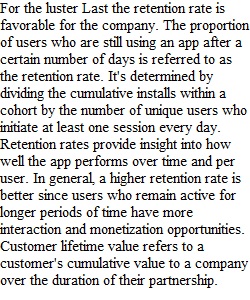


Q Instructions Scenario 3: Module 3 LusterLast®: Business Year 2019 At a board meeting Bernard Winfield, vice president of finance, inquired about the spending for acquiring customers. Thus, Ashanti has asked you to provide her with figures on the lifetime value of customers, the prospect lifetime value, average customer acquisition cost. The MIS department has provided you with the following data. In this scenario, the margin and contribution margin is considered to be the same. LusterLast® Unit Selling Price ($) Discount Rate (%) Acquisition Spending ($) Retention Rate (%) Variable Costs ($) 5.76 .01 1.15 .90 10 In Module 1 you began the construction of an Excel spreadsheet (or, workbook if you desire). And, as explained you will be building onto this spreadsheet as you journey through the modules. For this assignment, update your spreadsheet by providing the instructor with your updated spreadsheet which contains the information requested by Ashanti. Directly on the spreadsheet please provide some commentary about what you see developing through all the metrics you have calculated thus far. What is your rationale supporting your perspectives. This is only meant to be a brief and not a report.
View Related Questions